8 Types of Food Thermometers: What You Need To Know
March 21, 2018Food thermometers are essential restaurant supplies for your commercial kitchen.
They ensure that foods prepared in your commercial kitchen are cooked to the right temperature and held at that temperature for as long as necessary to kill any harmful bacteria. This makes these restaurant supplies a valuable safety tool in your kitchen.
But these restaurant supplies are not all the same. There are a number of different types, each designed to serve different purposes. Let’s take a look at the types of food thermometers available, and what makes them different from each other.
1. Thermocouples
Thermocouples read temperatures very fast – in as little as 2-5 seconds. These restaurant supplies are very versatile and can measure both thick and thin foods. They can be calibrated for easy reading. Unfortunately, they are highly inaccurate during cooking and are best used when the food is nearly cooked, for accurate results. Being rather sensitive restaurant supplies, thermocouples are not safe for oven usage.
2. Thermistors (Digital Instant Read)
Thermistors are great restaurant supplies that provide fast and accurate readings. A thermistor can be used to measure temperature in both thick and thin foods. However, not all models can be calibrated, and they cannot be used in food while cooking.
3. Oven Probe Cord Thermometers
Oven probe cord thermometers are versatile restaurant supplies that can be used in the temperature measurement of most foods. They are specifically designed for use inside an oven or covered pot while cooking, but can also be used outside the oven. The main downside is that they are not calibrated.
4. Thermometer-Fork Combination
A typical thermometer-fork combination reads temperatures in 2 – 10 seconds. These are versatile restaurant supplies that can be used in most foods. Thanks to their fork-like nature, they are highly convenient for use when grilling. Thermometer-forks cannot be used until your food is almost done cooking.
5. Dial Oven-Safe Bimetallic Thermometers
Dial bimetallic thermometers read temperatures in 1 – 2 minutes. This is much slower than most thermometers on this list. However, unlike many on the list, these restaurant supplies can be used in foods while cooking – although they have to be placed at least 2 inches deep for accuracy. These restaurant supplies are a good fit for roasts, soups and casseroles, but are not advisable for use when preparing thin foods. Due to the metallic nature of these thermometers, they are able to easily conduct heat and do not always provide accurate readings.
6. Digital Instant-Read Bimetallic Thermometers
Digital bimetallic thermometers are handy restaurant supplies provide fast and accurate readings. However, like many others on this list, they cannot be used while food is still cooking, but they can be used in both thick and thin foods. For those conscious of calibration, be sure to check if the model you’re considering is calibrated.
7. Disposable Temperature Indicators
Disposable temperature indicators are, as their name implies, single-use restaurant supplies. They provide accurate temperature readings in 5 – 10 seconds. Great for liquid foods, these thermometers are designed to measure food temperature while cooking. They are programmed to detect a specific temperature, changing colors when that temperature is attained.
8. Pop-up timers
Another type of single-use thermometer, these restaurant supplies “pop up” when food reaches a certain temperature. They are most often used when roasting turkeys and chickens. Combining pop-up timers with other conventional food thermometers will provide you with the best results.
Your choice of an appropriate food thermometer for your commercial or residential kitchen will depend on what you hope to achieve with one. Consider the pros and cons of each type of thermometer before selecting the right one (or ones) for your needs.
Questions to Ask Before You Invest in Kitchen Equipment
When you invest in kitchen equipment, you want to make sure you’re getting exactly what you need and that it will last you a long time. It can be overwhelming to think about everything you need when you’re starting a restaurant. Even if you’re just trying to add or...
Uh Oh. Handling Restaurant Disaster Recovery
No one wants to think about a major disaster hitting their restaurant. Unfortunately, it can happen at any time. In Arkansas, large areas (including Little Rock) were declared disaster areas as recently as last summer. Severe flooding, wind damage, and tornados are...
Restaurant Supplies You Need: Technology in Your Business
Every business is impacted by technology, and restaurants are no exception. There are dozens of ways to use technology to build your business, improve your efficiency, and serve customers better. Sometimes restaurant owners feel like they’re too busy to implement new...
Key Restaurant Equipment for a Fast-Casual Restaurant
Fast-casual dining has changed how America eats and has impacted what people expect in terms of convenience, price, and food quality. Generally, fast-casual food is affordable and higher-quality than pure fast food. It’s a step above a McDonald’s, without the price or...
Equipment for Your Restaurant: Choosing a Restaurant Concept
Some people who start a restaurant know exactly what they want. They either buy an existing restaurant with a concept, or they create the menu based on their family traditions or ethnic flair. However, not everyone who wants to start a restaurant knows exactly what...
Restaurant Supplies: Using Herbs to Add Flavor to Your Dishes
If you’re looking for new ways to attract people to your restaurant, consider the ways you can add flavor without adding fat or calories. Consumers are more and more concerned about the quality of what they eat, both at home and in a restaurant. Home cooks generally...
Commercial Kitchen Debate: Stainless Steel vs. Non-Stick Pans
If you run a commercial kitchen, you probably have a lot of ways of doing things that just seem right to you. For whatever reason, you decided between a gas and electric stove. You made decisions about dishware. And you probably have a position on the stainless steel...
Restaurant Equipment: How to Handle Gluten Allergies
In the last five years, you’ve probably seen a dramatic increase in the number of restaurant customers you have that are avoiding gluten. Some of them simply don’t like it, and others have a life-threatening reaction if they eat it. As a restaurant owner, you want to...
Reduce Food Waste: Proper Kitchen Equipment and More
Food waste is a reality in any commercial restaurant, but it doesn’t have to be accepted blindly. Too many restaurant owners or head chefs feel as though there is nothing they can do about this waste. Fortunately, there’s a lot you can do to reduce food waste in your...
Restaurant Supplies: Furnishing an Outdoor Sitting Area
Outdoor dining is a very enjoyable experience for many people. In Little Rock the weather is generally pleasant, although humidity may make it hard to eat outside on the hottest summer days. Adding an outdoor sitting area to your restaurant can be a great way to...
Commercial Kitchen Fun: The Wonder of Chocolate
If there’s anything that almost everyone loves as much as coffee, it’s chocolate. In fact, there are multiple celebrations of chocolate each year. Chocolate Day is on July 7th, because historically that’s when chocolate was first brought to Europe in 1550. Don’t miss...
Cooking Equipment Spotlight: Safe Indoor Grilling
Indoor grilling is a great way for your restaurant to delight customers without having to run a big charcoal operation out back. There’s nothing like grilled meat and vegetables to put a great aroma in the air and encourage hungry diners to dig in. There are two...
Restaurant Supplies: How to Properly Store Spirits & Drinks
Spirits and other alcoholic drinks can add a lot to your bottom line as a restaurant. These drinks often have high margins, and people order more than one frequently. This leads to more revenue for your restaurant and better tips for your servers! In order to make the...
Going Green Can Benefit Your Commercial Kitchen
Do you feel like running a restaurant means that you have to give in to wasted food, materials, and even money? Great news – you don’t. If you want to build your business, consider going green! You can structure your commercial kitchen to help the planet while also...
Key Foodservice Equipment for Your Food Truck
Are you ready to start a food truck? While the restaurant industry climbs slowly at roughly two percent a year, the food truck industry has been booming. Growing nearly 8% per year over the last five years, trucks are one of the fastest growing parts of the food...

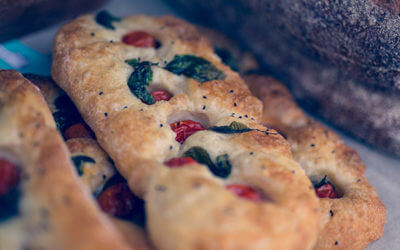
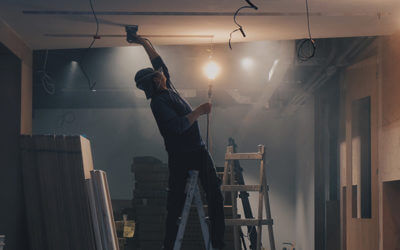

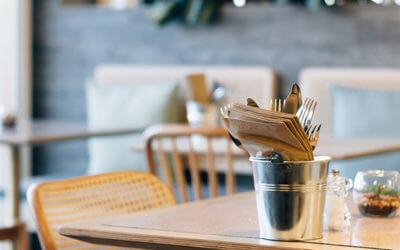


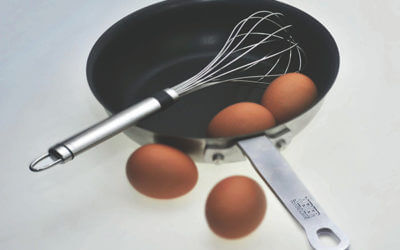

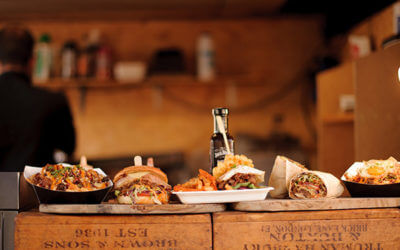

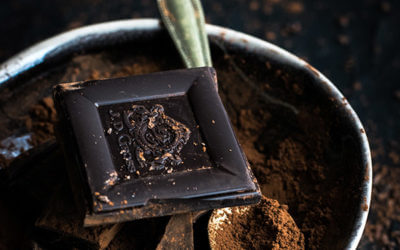
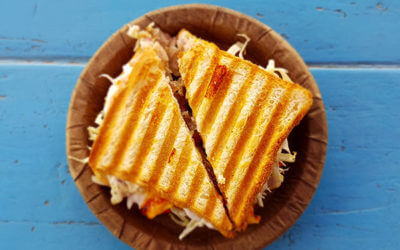

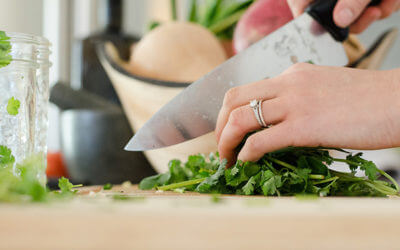
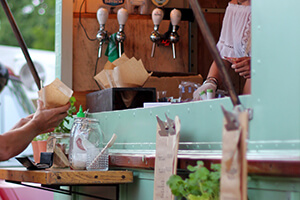
Using these tools of the trade, takes the guess work out of cooking foods to the right temperature,and gives you the
assurance that foods served have met the proper temperature requirements.